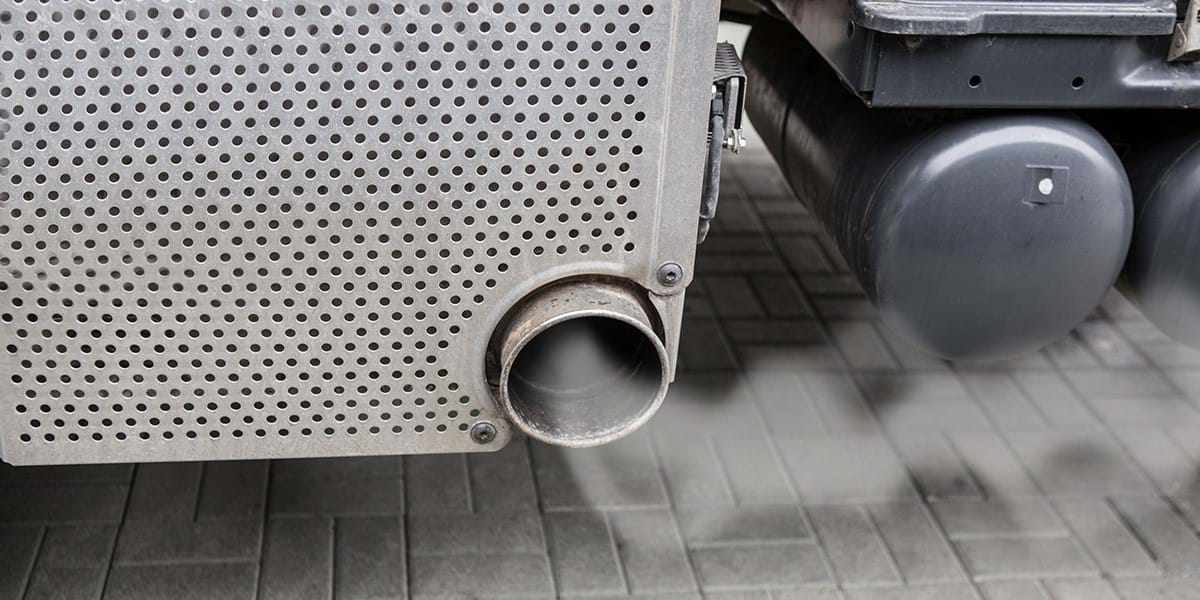Shane has been with TR Group since 2014 as our National Sales Manager. He is responsible for leading the lease sales team, focusing on growing our asset base and long term revenue. Moreover, he leads a team passionate for trucks and people, making sure to match great customers with the right vehicles, each and every time.
The 3 things you have to know about truck engine idling.

Idling is when a truck’s engine is running, but the truck is not moving, or powering ancillary components like a PTO, for example. It’s often done to maintain a comfortable cab temperature, power onboard devices, or avoid the hassle of restarting the engine. However, this seemingly harmless practice has significant costs and consequences for the environment, the economy, and the health and safety of drivers and communities. This blog will explore these issues and discuss ways to reduce truck engine idling.
1. Environmental and Health-Related Issues with Truck Idling
Idling has a negative impact on the environment. When a truck is idling, it emits exhaust fumes into the air, contributing to local air pollution by increasing the number of particles in the air. This also has a greater impact on our overall carbon dioxide emissions.
A recent Transport Energy/Emission Research report from Australia found that trucks can be idling up for as much as 20% of their drive time. The report found that engine idling contributes up to 8 per cent of total carbon dioxide emissions over the journey, depending on the vehicle type.
To put that into perspective, removing idling would be like removing up to 320,000 cars from New Zealand roads.
Truck engine idling also poses health and safety risks to drivers and communities. Idling produces carbon dioxide, nitrogen oxides, and particulate matter that can cause respiratory problems, especially for vulnerable people such as children and older adults. Additionally, exposure to diesel exhaust – a by-product of idling – can worsen respiratory illnesses like asthma and bronchitis.
2. Fuel and Maintenance Costs of Truck Idling
The amount of fuel a truck wastes while idling ranges from between 3 to 10L per hour, depending on its engine size. Currently, diesel costs an average of $2.10 per litre, which is between $6.30 to $21.00 each hour. To give context at a wider scale, a recent report found that engine idling wastes more than NZ$29 billion in the U.S. alone.
Simply switching off an engine can lower your fuel costs. Additionally, idling puts unnecessary wear and tear on the engine, reducing its lifespan and increasing maintenance costs.
3. Reducing Truck Engine Idling
Fortunately, there are ways to reduce truck engine idling and its associated costs and consequences. One approach is knowing how long your truck engine needs to warm up. Most modern engines need no more than 1 to 3 minutes since they come with emission controls and warm-up software programs. Couple these with improved lubricants and heavy commercial vehicles with modern engines are ready to work pretty much straight away. Remember that idling for prolonged periods only wastes fuel and provides no tangible benefits.
Another way to reduce truck engine idling is to turn off the vehicle when it’s going to idle for over 10 seconds. The myth that switching off your engine and turning it back on is bad for trucks simply isn’t true. Turning a truck off and on again doesn’t burn more fuel than idling – so stick to this 10-second rule.
Lastly, where possible, better route planning can help avoid traffic congestion which ultimately reduces idling time.
Remember: the small things count when it comes to reducing truck engine idling. The reality is that it’s a bad habit and a costly practice that adds to environmental, economic, and health issues. By forming a habit of reducing idling, we can reduce fuel consumption, emissions, and maintenance costs while also improving the quality of life for drivers and communities.
TR Group is committed to doing its part in sharing industry tips like this to promote sustainable transportation practices. We hope you learnt a thing or two about truck engine idling. By forming good habits to reduce it, we can make sure that we all play a part in creating a better future today.